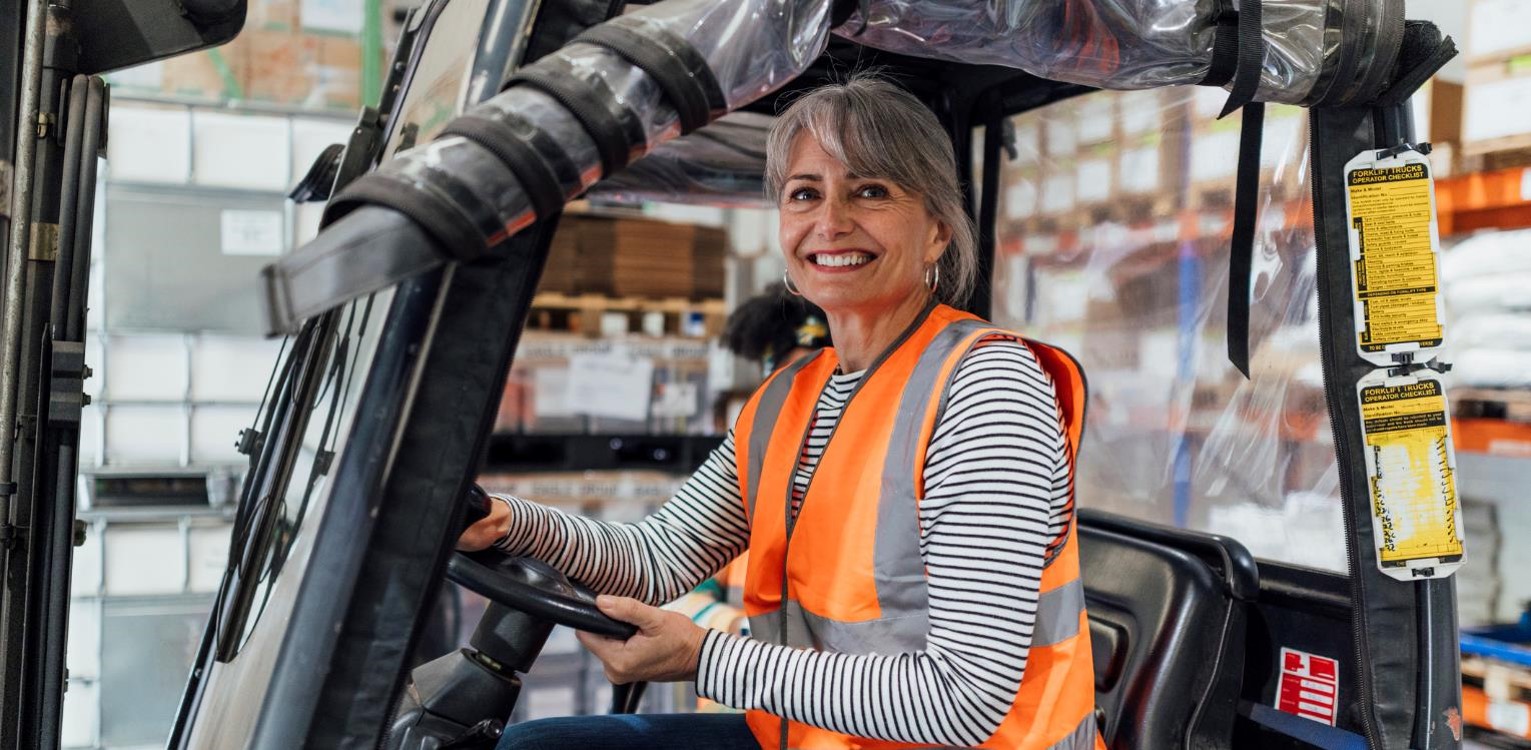How to Become a Counterbalance Forklift Truck Driver

Understanding the Counterbalance Forklift Driver Role
Counterbalance forklift drivers are essential for warehouse and logistics operations when it comes to transporting goods safely and efficiently. Their primary responsibility is to operate forklifts designed to balance heavy loads, ensuring that items are handled without damage. This role requires precision, adherence to safety protocols, and strong organisational skills. Whether in a warehouse, factory, or distribution centre, counterbalance forklift drivers play a key role in maintaining the supply chain.
Explore forklift driver jobs to start your career in this dynamic field.
Dress Code
Forklift drivers typically wear high-visibility vests, steel-toed boots, and gloves. In some cases, helmets and additional protective gear are required for safety compliance.
Counterbalance Forklift Driver Responsibilities
Responsibilities include loading and unloading goods, transporting materials safely, conducting equipment inspections, and adhering to safety regulations to ensure smooth warehouse operations.
Counterbalance Forklift Driver Tips
Stay alert and focused during operations, as precision is critical. Always perform pre-shift vehicle inspections to ensure your forklift is in proper working order. Familiarise yourself with load limits and maintain clear communication with colleagues to coordinate tasks effectively. Following safety protocols at all times reduces risks and enhances efficiency.
Forklift Driver Certification and Training Requirements
To become a counterbalance forklift driver, obtaining a forklift licence and completing comprehensive safety training are essential.
Obtaining Your Forklift Licence
To get your licence, you’ll have to enrol in a certified forklift training course, which typically includes both theory and practical components. The course covers safe vehicle operation, load handling, and maintenance. Candidates must pass a practical test to demonstrate their ability to manoeuvre forklifts safely and efficiently in real-world scenarios. Successful completion of the course results in a recognised forklift licence, valid across the UK. This licence is a mandatory requirement for professional forklift operators.
Key Safety Training
Safety training is a fundamental aspect of becoming a forklift driver. Courses emphasise proper load distribution, equipment checks, and emergency procedures. Drivers learn to navigate complex environments, including narrow aisles and crowded spaces, while maintaining safety standards. Understanding the risks associated with forklift operation, such as tip-overs or collisions, ensures that you are prepared for the role. Ongoing safety training is recommended to stay updated on industry standards and regulations.
Essential Skills of a Forklift Driver
Forklift drivers need technical proficiency, strong spatial awareness, and the ability to collaborate effectively with colleagues to manage warehouse operations seamlessly.
Concentration and Spatial Awareness
Operating a forklift requires sustained focus and a keen sense of spatial awareness to manoeuvre safely in confined spaces. Drivers must anticipate potential hazards, such as obstacles or pedestrians, while ensuring precise placement of goods. Maintaining concentration during repetitive tasks is critical for avoiding accidents and ensuring efficiency. Regular breaks and adherence to safety protocols support sustained performance and reduce the risk of errors.
Machine Operation Skills
Proficiency in operating forklifts is essential for managing various tasks, from loading and unloading goods to navigating tight spaces. Drivers must understand equipment controls, weight limits, and maintenance requirements. Familiarity with different forklift models enhances versatility and employability in diverse work environments.
Teamwork
Forklift drivers often collaborate with other employees to manage inventory, meet deadlines, and resolve logistical challenges, so effective communication with colleagues ensures coordinated operations. Building strong relationships within the team fosters a positive work environment and supports overall efficiency, as teamwork is key to achieving shared goals in high-pressure situations.
Counterbalance Forklifter Job Flexibility and Career Options
Forklift driving offers flexibility, with opportunities for both temporary and permanent roles across various industries, enabling drivers to tailor their careers to personal and professional goals.
Temp Counterbalance Forklift Driver Positions
Temporary counterbalance forklift roles allow drivers to gain experience and explore different industries. These positions are ideal for individuals seeking flexible hours or short-term commitments. Temp work also provides exposure to various work environments, such as warehouses, factories, or distribution centres, helping drivers build versatile skills. Many temporary roles lead to permanent employment opportunities, as employers value adaptable and experienced candidates.
Permanent Employment Opportunities
Permanent forklift positions offer stability and benefits, including consistent schedules, paid leave, and opportunities for career advancement. Drivers can specialise in specific types of forklift operations or transition into supervisory roles. Many companies provide on-the-job training and additional certifications to enhance skills. Permanent roles are ideal for individuals seeking long-term careers in the logistics sector.
Visit here to learn how to develop your own forklift driver cv template.
FAQs on Becoming a Counterbalance Forklift Driver
What is a Counterbalance Forklift Driver?
A counterbalance forklift driver operates forklifts designed to balance heavy loads, safely transporting and organising goods in warehouses, factories, and other industrial settings. Take a look at a forklift driver job description to learn more.
How Long Does Forklift Driver Training Take?
Counterbalance forklift training typically takes 1–5 days, depending on prior experience and the complexity of the equipment being operated.
Do You Need a Driver’s Licence to Drive a Counterbalance Forklift?
While a standard UK driver’s licence is not required, some employers prefer candidates to have one, particularly for roles involving outdoor or road-based work.
What is the Average Forklift Driver Salary in the UK?
Counterbalance forklift drivers in the UK earn between £20,000 and £25,000 annually, with potential for higher earnings in specialised roles or high-demand industries.
What is the Difference Between Reach and Counterbalance Forklifts?
A counterbalance forklift can generally carry heavier loads and while a reach forklift can operate at greater heights and has a narrower turning radius. Find out more about becoming a reach forklift driver.
